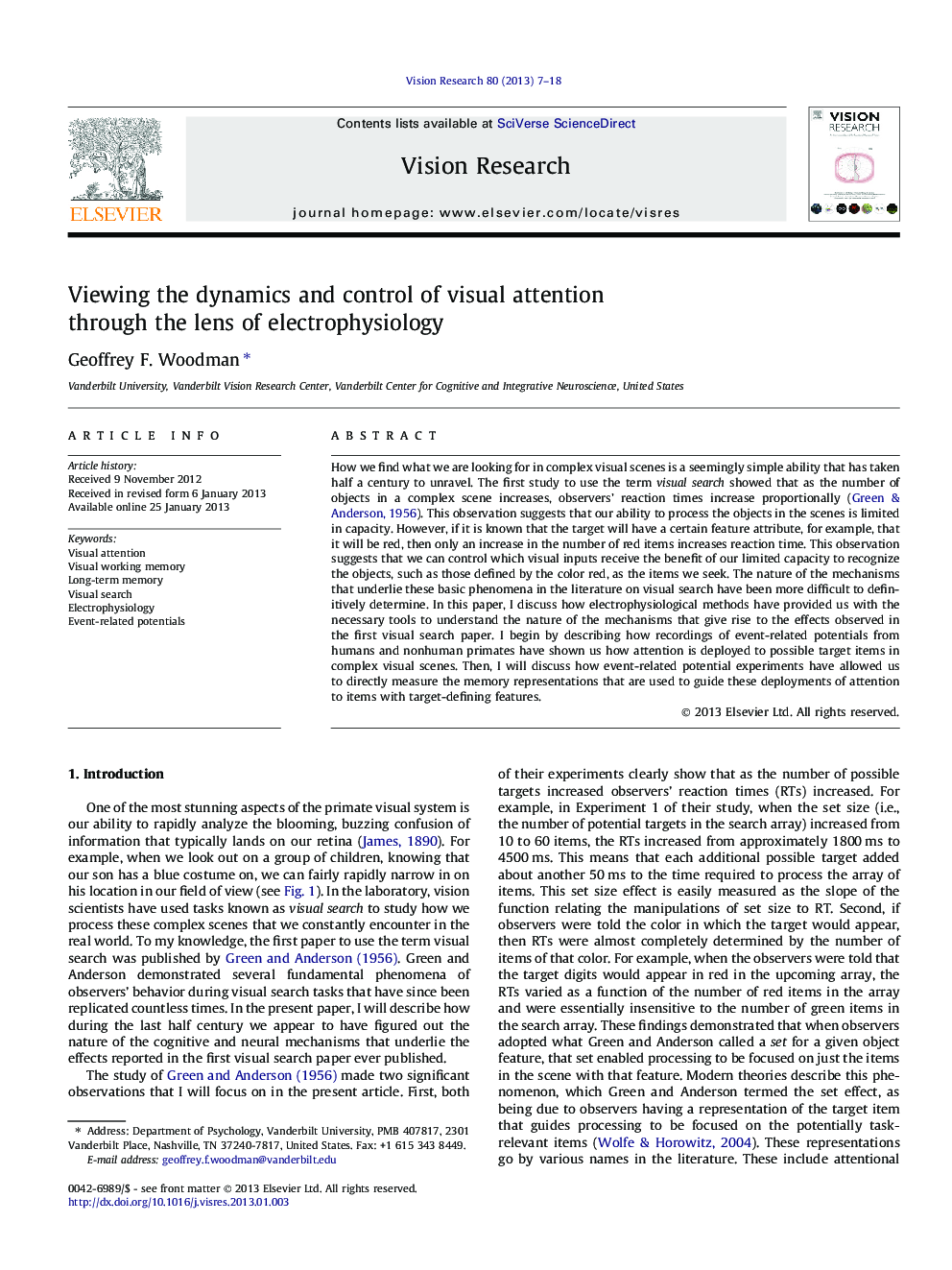| Article ID | Journal | Published Year | Pages | File Type |
|---|---|---|---|---|
| 4033768 | Vision Research | 2013 | 12 Pages |
How we find what we are looking for in complex visual scenes is a seemingly simple ability that has taken half a century to unravel. The first study to use the term visual search showed that as the number of objects in a complex scene increases, observers’ reaction times increase proportionally ( Green & Anderson, 1956). This observation suggests that our ability to process the objects in the scenes is limited in capacity. However, if it is known that the target will have a certain feature attribute, for example, that it will be red, then only an increase in the number of red items increases reaction time. This observation suggests that we can control which visual inputs receive the benefit of our limited capacity to recognize the objects, such as those defined by the color red, as the items we seek. The nature of the mechanisms that underlie these basic phenomena in the literature on visual search have been more difficult to definitively determine. In this paper, I discuss how electrophysiological methods have provided us with the necessary tools to understand the nature of the mechanisms that give rise to the effects observed in the first visual search paper. I begin by describing how recordings of event-related potentials from humans and nonhuman primates have shown us how attention is deployed to possible target items in complex visual scenes. Then, I will discuss how event-related potential experiments have allowed us to directly measure the memory representations that are used to guide these deployments of attention to items with target-defining features.
► I present several enduring controversies regarding visual attention using visual search tasks. ► I discuss how event-related potentials have shown that attention shifts between items during search. ► I describe a technique for recording event-related potentials from monkeys to reveal their origin. ► I describe how we can directly measure the memory representations that control attention.
